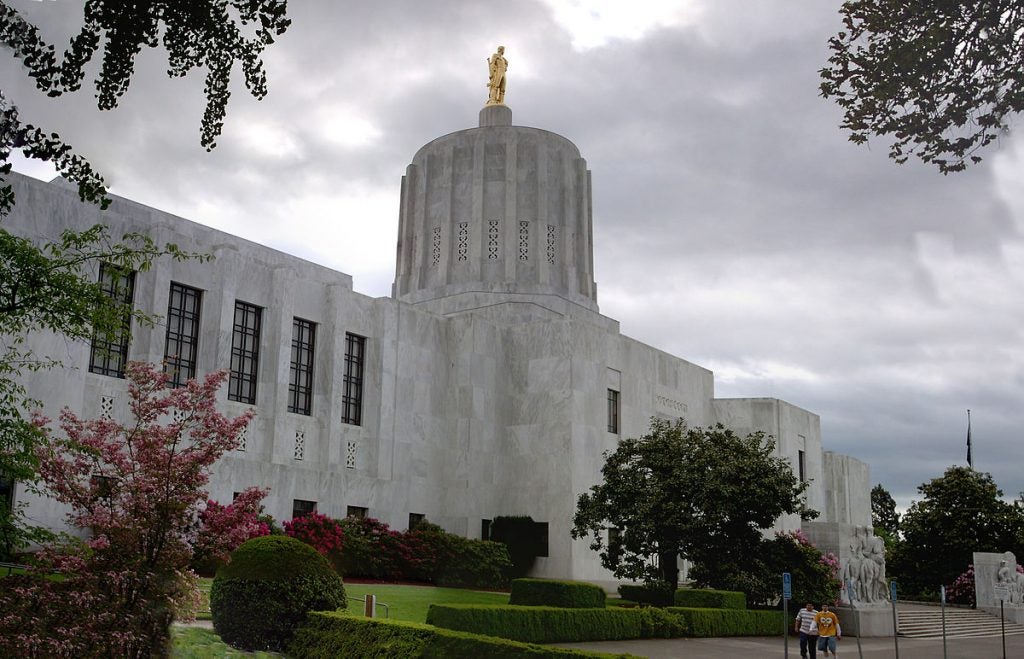Co-authored by Pam Kiely and Erica Morehouse
Two disturbing national trends – scorched-earth politics and a failure to act boldly on the climate crisis – came together in Oregon last week. For the fifth time in less than a year, legislators opposed to the majority party’s agenda fled instead of fulfilling their core responsibility as elected officials: to represent their constituents by casting votes in the legislative process.
From North Carolina to Wisconsin to Washington DC, we’ve seen increasingly reckless behavior to block the will of the voters on a range of issues. In Oregon, with the anti-climate lawmakers gone, House Speaker Tina Kotek ended the legislative session, acknowledging that there was no time left to adequately consider more than one hundred pieces of legislation that were hanging in the balance. She rejected a radical proposal to allow a small minority of legislators to dictate what would be considered by the chamber.
Into that policy void, Oregon Governor Kate Brown committed to using the tools available to her to deliver the outcome demanded by the people of Oregon: meaningful action on climate that cuts pollution consistent with scientific recommendations. Brown appears poised to use this moment to drive investment and innovation in clean technology, boost the state’s economic competitiveness and improve public health outcomes
What happened?
Almost two weeks ago, 11 Senators and 21 Representatives walked out on their jobs, not only preventing climate action supported by a significant majority of Oregonians but also halting the basic functioning of government, including the passage of a budget to allow the state to operate. The walkout meant both houses of the Legislature were denied “quorum,” a Constitutional requirement that two-thirds of all members be present to hold a vote.
These members left a full two weeks before the Constitutional end of session, refusing to return to their taxpayer-funded jobs, halting the functioning of the legislature on myriad critical issues including measures to prepare the state for earthquakes and the coronavirus, and then at the 11th hour “offered” to come back for 12 hours to vote for bills of their choosing, effectively proposing a true tyranny of the minority. President of the Senate Courtney and Speaker Kotek took the only path available to them by closing the session.
Oregonians overwhelmingly support strong action to protect the health and economic future of their state from climate change. Even more interesting, the legislation has garnered broad support, from an impressively diverse array of stakeholders from utilities to labor, farmers and farmworkers alike.
Legislative leaders had secured all of the votes needed for passage in the House and the Senate. This is not the first time that an obstructionist minority has refused to do their jobs in order to block legislative action on the climate. Over the three years that they have been delaying, denying, and obstructing, Oregon could have made real progress slashing climate pollution and investing in clean energy solutions across the state, helping to lead the nation in solving the climate crisis and growing good jobs from Pendleton to Klamath Falls .
What’s next?
Governor Brown has two main options for the immediate action on climate Oregon needs. Pursuing both, tirelessly, will be critical not just in order to secure critical cuts in carbon pollution, but also to restoring a functioning democratic order. First, she can call a special session of the Legislature to conclude all of the state’s unfinished business—and continue to work with House and Senate leaders to ensure that whenever the legislature does meet again, the agenda is not dictated by a small minority threatening to hijack the process. Since walkout members just ignored a subpoena to return to the House and answer questions, it is not clear this will be immediately effective—but it will be absolutely essential in the long run to not legitimize these obstructionist tactics.
Second, Governor Brown can also tap into the robust existing authority of the Department of Environmental Quality, tasking them to develop regulations that will deliver reductions in line with what the science tells us is necessary, and engage other state agencies to develop complementary policies that will enable Oregon to get on a path to achieving a 100% clean economy by mid-century.
Oregon, like almost every other state, has strong clean air laws already on the books that direct state environmental regulators to protect residents from harmful air pollution, which includes greenhouse gases. These existing authorities are powerful, and the DEQ has a well-stocked toolbox to develop a regulatory proposal that secures the reductions that would have been required by HB2020 (2019) and SB 1530 (2020) using time-tested regulatory tools.
Governor Brown last week explained her thinking on these two options with a clear commitment to take action, saying:
“I have always been clear that a legislative solution was my preferred path to tackle the impacts of climate change for the resources it would bring to our rural communities and the flexibility it would provide for our businesses. However, I will not back down. In the coming days, I will be taking executive action to lower our greenhouse gas emissions.
I am open to calling a special session if we can ensure it will benefit Oregonians. However, until legislative leaders bring me a plan for a functioning session I’m not going to waste taxpayer dollars on calling them back to the State Capitol.”
What will success look like in Oregon?
Governor Brown is a consistent and stalwart supporter of climate action in Oregon: she understands that what is needed in Oregon and across the country is to turn climate commitments into concrete action, locking in the policies that will guarantee the reductions we need. She and her administration can draw from years of extensive public engagement that carefully balanced the interests, and won the support of, business owners, labor groups, farmers, outdoorsmen and women, consumer advocates, Tribes, and community leaders.
In evaluating the executive action that Governor Brown has promised, EDF will be looking for three main indicators of a strong commitment to action:
- Maintains or ideally strengthens the climate pollution reduction targets the legislature included in its proposals: at least a 45% reduction below 1990 levels by 2035 and at least an 80% reduction by 2050.
- Directs agencies to deliver a regulatory package that is capable of ensuring these targets will be met.
- Recognizes the urgency of action and adheres to the timeline the legislature was pursuing so that Oregon has an enforceable climate policy framework in place that can deliver reductions by 2022.
Governor Brown can ensure that those walkout legislators who abandoned their jobs don’t set a dangerous precedent for a functioning democracy, and don’t thwart the kind of policy momentum that our communities and our planet desperately need. If their underhanded tactics are successful, it will be our kids– and their kids – who will pay the price.
It is heartening to see two women, the Governor and the Speaker, provide such responsible, strong, and forward-looking leadership. In a moment when the country is observing the roadblocks faced by women in politics, Oregon is providing a vivid counter-example. With women like Governor Brown and Speaker Kotek in office, we know we have a fighting chance to make progress on the climate crisis.













